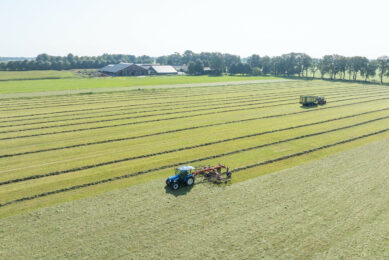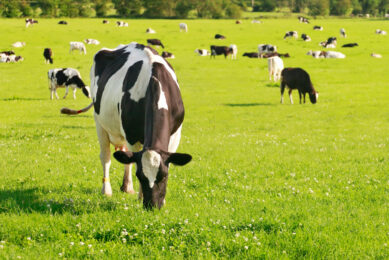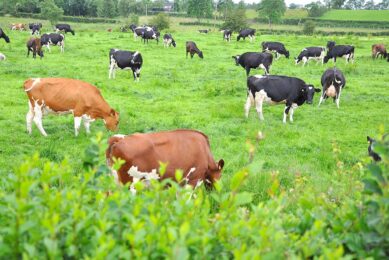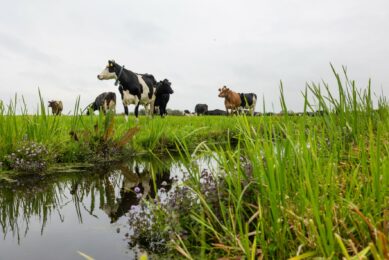NIRS device to measure nutrient in pasture
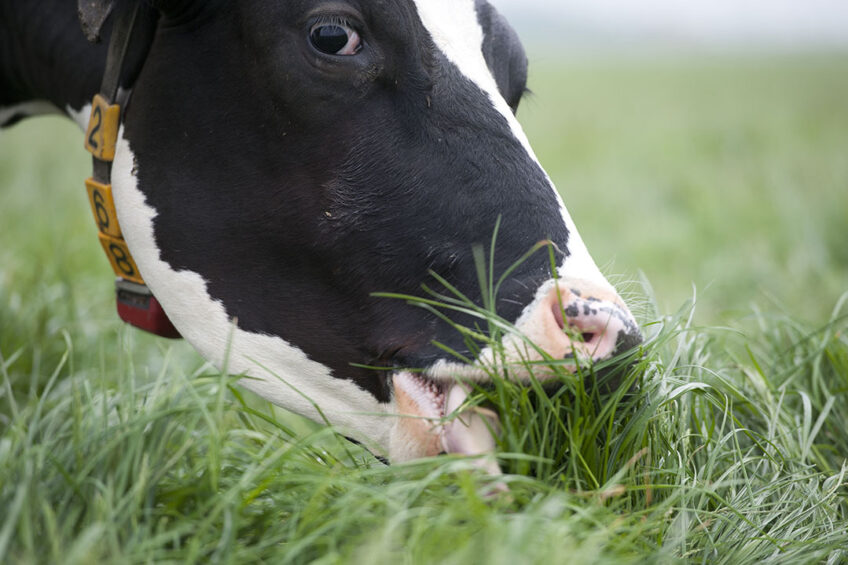
A fast new way of checking nutrient levels in grasslands allows farmers to quickly monitor changes in pasture nutrients and adapt their animals’ grazing methods accordingly.
By cutting the analysis time from around 16 hours to less than a minute, this “relatively cheap and easy approach will greatly improve the sustainable management of grasslands – the main form of agriculture in many parts of the world, and a cheap and affordable source of nutrients for ruminant livestock that in turn provide meat and milk for people,” reports ScienceDaily. Using this new method, researchers publishing in Frontiers in Sustainable Food Systems show that overgrazing pasture to below 7cm significantly reduces the amount protein and digestibility of the grassland. “Real-time nutrient monitoring can provide a more timely and adaptive pasture management than is currently feasible for farmers and should lead to productivity gain,” says Matt Bell, lead author of this study and Assistant Professor at the School of Biosciences, University of Nottingham, UK.

NIRS technique
To manage pasture most effectively the researchers calibrated a handheld near-infrared spectroscopy (NIRS) device to measure nutrients in pasture. The NIRS technique measures the spectrum of energy reflected from a sample illuminated by white light, providing information on different nutrient levels. It reduces the time taken for analysis from around 16 hours to less than a minute. Using this new method, Luca Mereu, co-author of this research, collected samples at the University of Nottingham farm to assess changes in pasture nutrients and the factors that may have caused these changes. The results showed that a decline in the height and cover of pasture were associated with lower digestibility and reduced concentrations of protein.
Also read: Pasture reader monitors grass growth
Avoid going below a height of 7cm
“Intensively grazed pastures should avoid going below a height of 7cm, otherwise nutrient intake by the animals will be limited. Below this height the composition of the grass is more stem and residual plant material than vegetative plant material,” explains Mr Bell. He continues, “Our study confirms that this new hand-held NIRS technology can be used to inform better grassland management decision making and the utilisation of pastures for sustainable production.” The researchers said they want to investigate other factors potentially influencing changes in pasture nutrients such as botanical composition, different grazing animals and variability within a day. “This may help farmers to decide the optimum timing for grazing by sheep and cattle, as well as silage management.”



